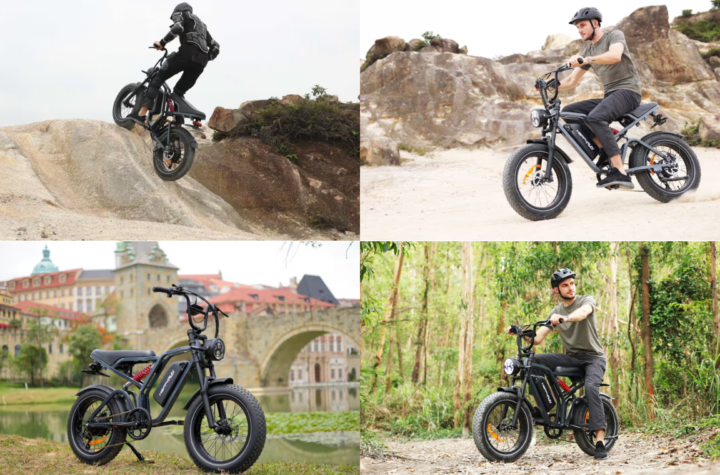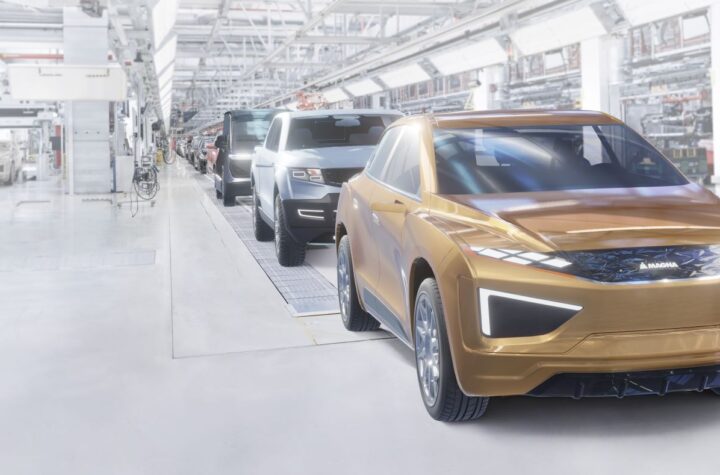
 Tom Purves, BMW’s chairman and CEO has plenty to crow about. Enjoying a renaissance as of late, BMW is on track to end 2003 with record sales in North America and with three new models launching in the last three months it doesn’t look like the tide will be ebbing too soon.
Tom Purves, BMW’s chairman and CEO has plenty to crow about. Enjoying a renaissance as of late, BMW is on track to end 2003 with record sales in North America and with three new models launching in the last three months it doesn’t look like the tide will be ebbing too soon.
“We deliver quality to people who see it and understand it,” says Purves. “BMW, in its heart of hearts, understands that it’s in the premium car business and it can’t please everyone.”
But Purves is looking to expand on those that BMW can please, looking to conquer 1.5 percent of the U.S. market and he sees products like the new X3 Sport Activity Vehicle as a catalyst to help BMW do just that.
BMW entry to the burgeoning North American luxury SUV market four years ago met with skepticism, not just from the automotive press, but from Purves himself.
“We were afraid,” Purves says, “that we were going to sell a lot of X5s to 5 Series owners.” But X5 proved them all wrong. BMW’s self-professed “Ultimate Driving Machine” of luxury SUVs has posted six-figure production numbers in its four year run, requiring BMW to expand capacity at its Spartanburg, S.C., assembly plant, but most importantly bringing new customers to the BMW brand.
 |
| The X3’s interior is stylish and functional. The leather-covered seats offer good support and a more sports-sedan-like driving position. Note the center-mounted pop-up navigation system and interesting interior door handles. |
 |
| The X3 utilizes two version of BMW’s 24-valve inline six, a 184 hp 2.5L and a 225 3.0L. The six is a pretty tight fit, filling up the X3’s engine compartment. |
X3’s SAV acronym pretty much sums it up. BMW says that it’s an SUV for young, athletic people with an active lifestyle, the kind who will throw their skis or bike in the back and head out for the day.
X3 resembles a tall five-door on stilts and fits well into the crossover SUV genre created by competitors like the Acura MDX and Lexus RX330. The vehicle, designed in Germany, bears a close resemblance to the X5.
A crisp line runs the length of the vehicle from bulging front fenders to bulging rear fenders, even dissecting the fuel filler cover. There are plenty of quality cues like the taillights, mounted on the tailgate that wrap around into the fenders. Fit and finish is what’s expected from a luxury-brand manufacturer like BMW.
The X3 is not that much smaller than X5, giving up only 1.1 inches in wheelbase at 110.1 to the X5’s 111. The X3 is 0.7 inches narrower, 1.5 inches shorter and weighs 628 pounds less. Though it loses 1.5 cu.-ft. of interior volume to X5 it picks up two more cu.-ft. of cargo volume.
The X3 has, what BMW calls, an essentially new chassis. While the unibody structure is unique to the vehicle it does utilize some floor pan stampings from the 3 series. The front suspension is an X3-only version of the same double-pivot strut-type layout found on the 7 series, 5 series and X5. X3 adds a front thrust plate that reinforces the front suspension and acts as a skid plate.
The rear suspension borrows its concept from the Z4 and 3 series. The multi-link system, which BMW refers to as Central Link, adds dual diagonal bracing and other specific reinforcements to help beef up the underbody area where the suspension attaches. The suspension utilizes aluminum forward lower links on the front and upper transverse links on the rear as well as stabilizer bars both front and rear and twin-tube gas-pressure shock absorbers.
Bert Holland, product manager for the X3, says that in initial discussions with the chief suspension engineer it was decided that the components would be made robust enough so that no compromises would have to be made to either off-road ruggedness or sports car-like handling. “These vehicles are driven like trucks in countries like Russia,” says Holland, “so the suspension system had to be able to handle that kind of driving.”
 |
| A large two-panel sunroof-moonroof provides a great view of the Arizona desert greenery. |
BMW offers five wheel options for the X3. Four-wheel ventilated disc brakes are standard. Front rotors are 12.8-inch with 12.6- inch rotors at the rear.
The X3 is powered by two versions of BMW’s DOHC, 24-valve inline six. The 2.5L is rated at 184 hp at 6,000 rpm and 175 lb.-ft. of torque at 3,500 rpm. The 3.0L makes 225 hp at 5,900 rpm and 214 lb.-ft. of torque at 3,500 rpm. Both engines share BMW’s M45 architecture that features aluminum block and cylinder heads, double VANOS steplessly variable intake- and exhaust-valve timing and a dual resonance intake system.
The engines bolt to either a ZF Type H sixspeed manual of five-speed automatic with STEPTRONIC, with both sport and manual modes. The X3 and the 2004 X5 feature BMW’s new xDrive four-wheel-drive system. The system, designed to aid in vehicle dynamics as well as traction, variably transmits torque from front to rear as driving conditions demand.
The sporty theme is carried on into the interior, which borrows the radio, navigation system and instrument cluster layout from the Z4, though the graphics on the cluster have been redesigned specific to X3.
Interior materials are first rate, though BMW says that one complaint it got with the X5 was that owners were afraid to get it dirty. They needn’t be afraid with X3. The interior looks light, yet rugged with all surfaces covered in materials that look like they’d be easy to clean.
The door panels are carved out to create plenty of shoulder and hip room and metal grab handles run from the top of the door to the bottom add a feeling of structural strength.
The rear seat folds down in a 60/40 split with the headrests removed, adding to the rear cargo area that features metal tracks in the floor designed for special cargo systems. BMW already has a bike rack available and others are on the way.
The roof rails are the same as found on all BMWs and can accommodate any BMW roof storage systems.
Base price for the X3 2.5i is $30,995 with the 3.0i base price coming in at $6,000 more. Both prices include a $695 destination charge.
BMW offers a premium package for each model. For an extra $3,800 you can equip your 2.5i with front fog lights, rain-sensing windshield wipers, automatic climate control, a four-function on-board computer, leather wrapped steering wheel with multi-function controls, including cruise control, auto-dimming review mirror, power front seats with memory, maple sycamore dark interior trim, front center armrest, storage net in passenger footwell, upgraded interior lighting, attachment rails, a reversible, slip-proof mat for the cargo area and BMW assist.
The package also includes a panorama sunroof that consists of two glass panels with a glass area of nearly 10 feet. Both panels tilt while the front panel opens. The sunroof also features a power-operated shade.
Add $3,300 to your 3.0i and get leather upholstery, four-way power lumbar support for the front seats, auto-dimming mirror, wood interior trim, Panorama moonroof and BMW Assist. All of the other features in the 2.5i package are standard on the 3.0i.
A sport package includes a sport suspension, 18-inch wheels and tires, black exterior trim and sport seats and steering wheel. A cold weather package adds a headlight cleaning system, heated seats and a ski bag. 2.5i owners can add a light package that includes front foglights, automatic headlight control, rain-sensing windshield wipers and Xenon Adaptive headlights.
The outboard lights of the Adaptive lighting system steer with the front wheels, controlled by an electronic control system and swiveled by servo motors, when the vehicle is moving forward.
BMW also offers 24 stand alone options including all-of-the-above plus a navigation system, park distance control, power folding mirrors, metallic paint, SIRIUS radio, a six- disc CD changer, auxiliary audio input, privacy glass and a rear cargo net.
All X3s come standard with dual-stage driver and passenger airbags and side curtain Head Protection System. Rear seat sideimpact bags are optional.
Front seat belts include automatic tensioners and force limiters.
Aluminum reinforcing bars strengthen the body side and, in the event of a serious side impact, hook into the body as the door deforms. The system is designed to allow the doors to be opened after impact.
The Intelligent Safety and Information System (ISIS) is a decentralized system of 14 sensors linked through seven control units, each with its own microprocessor, connected to a Safety Gateway Module (SGM). The system tailors airbag deployment and also provides redundancy to help preserve system reliability even when portions of the system might be damaged by accident forces.
BMW X3 is built by Magna Steyr, at its Graz, Austria, assembly plant (see sidebar). The plant has the capacity to build 70,000 vehicles per year. X3 goes on sale in the U.S. on Thanksgiving Day, with the first vehicles being delivered in February of 2004.
| The Magna Steyr Solution As BMW looked to expand its portfolio, it identified several markets that were appropriate to the brand. The X3 fit into one of these niches and the nod was given to go ahead with the project. But BMW was growing so fast that it had exhausted not only its manufacturing capacity, but its R&D capacity as well. The time and budget weren’t there to build a new manufacturing facility so the decision was made to look for a partner who could handle both the R&D and manufacturing. “The ideal situation was to find a partner that could handle both, if possible, but it wasn’t a requirement,” says Bert Holland, product planning chief for the X3. BMW looked at both Karmann and Magna Steyr and settled on Magna Steyr. “Part of the reason for that,” says Holland, “is because they had a certain amount of competency with four-wheel-drive, which we felt would be complimentary to us.” Magna currently builds all of Mercedes-Benz four-wheel-drive and did the R&D work on the Audi TT. Magna’s Austrian location was also a plus. With a strong supply base in the area and close proximity to both Germany and Italy, BMW would be able to utilize its regular supply chain without complicating logistics. While Magna Steyr performed the R&D and manufacturing functions, BMW oversaw the whole process. “We wrote the contract in such a way and designed the program in such a way that we are running the show soup to nuts,” says Holland. “But we gave them a large degree of responsibility for the execution.” Magna had control over which components would be pre-assembled by the suppliers and which components would be assembled on the line. The sub-assemblies are done by suppliers in the logistics pre-assembly plant and the finished modules are trucked to the assembly facility. The suppliers were given some options on whether the sub-assemblies would be done in their facilities or in one of Magna Steyr’s facilities. This is the first program that BMW has done with a contract manufacturer handling both R&D and manufacturing. The project was also completed in a relatively short period of time, 27 months from the signing of the contract to the first production vehicle. The first car came off the production line in January 2003, the beginning of Magna Steyr’s parts and production tryout process. Pre-series production began in March and preproduction started in July. The first customer vehicles came off of the line the first part of September and the plant continues to ramp up to its full capacity of about 78,000 annually. |













More Stories
From Gasoline Powered Cars To Electric Vehicles | Electric Moped Bike A Best Alternative
Rubbernecking: A Silly Reason for Car Accidents
Flexible Magna Manufacturing Solutions: The Key to Success in the Automotive Industry